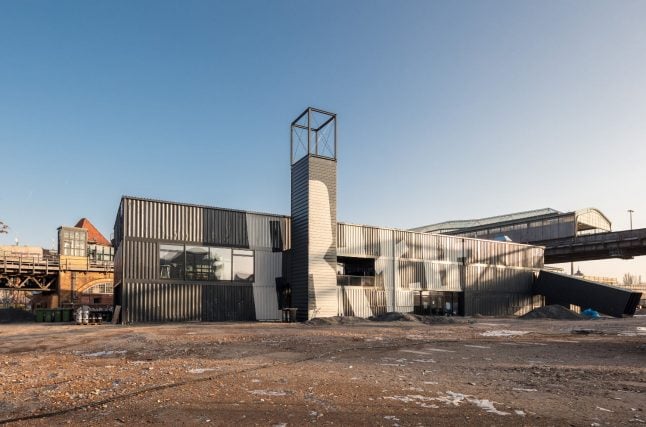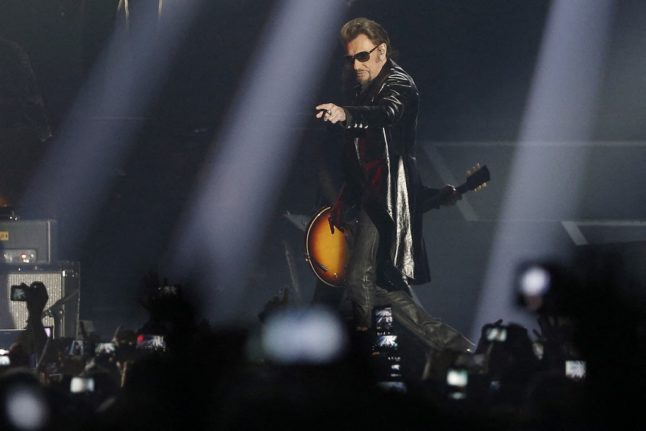The harsh, steel, industrial facade of the BRLO brewery in Berlin’s gentrifying Kreuzberg district is a stark contrast from the typical, wood-panelled gemütlich beer halls of German tradition.
But that’s perhaps exactly what makes this new beer house so perfectly Berlin: it’s rejection of norms, embrace of repurposing, and willingness to innovate – even with something as eyebrow-raising as shipping containers.
The brewery fully opened in January on a formerly empty plot right at the edge of the popular Gleisdreiecke Park. It is designed a bit like a child building with Legos: metal containers stacked atop one another in a neat, strategic layout of about 600 square metres. And also like Legos, it was created to be easily disassembled, or even conveniently be moved elsewhere.
“The flexibility makes it beautiful,” says Lars Krückeberg of architecture firm Graft, the brainchild of the container design.
Krückeberg founded Graft in Los Angeles nearly 20 years ago with Wolfram Putz and Thomas Willemeit, two other German architects, and they have since brought their modern creations to cities all over the world, from Malaysia, to Dubai, to Norway, and even helped bring to life the Will Smith music video for Y2K.
The team had already experimented with containers in other works, first using them for interior rooms within a conference centre in Los Angeles. But Krückeberg said they weren’t allowed to use shipping containers for the building’s structure.
Then in 2012 they opened an artist space with the group Platoon in Berlin using containers, catching the eye of local BRLO craft beer company, who then approached Graft about the idea for the brewery.
The containers are a relatively more affordable option for construction, and also allowed the project to be completed in a much shorter amount of time. While the beer garden opened last summer, the fully functioning brewery and restaurant launched officially about six months later.
And the easy maneuverability of the containers also means that the brewery is mobile: the beermakers have only been granted temporary use of the land for the next three to five years. After that, they would be able to either easily dismantle the brewery and sell it on, or completely move it to a new location.
That’s why Krückeberg refers to it as a “pop-up”.
“Pop-up architecture has always existed – think about medieval marketplaces, or in Renaissance Italy – just not that much. But more and more people are doing it,” he explained.
While the concept of a temporary brewery might sound quite novel, creating such ephemeral installations is a beloved Berlin pastime. Currently there's also an ongoing massive art exhibition, which was “created to be destroyed”, occupying a five-storey former bank that is slated to be torn down this summer.
Containers do, however, have their drawbacks. They are cheaper, but not as inexpensive as some might expect, especially in comparison to their worth at the height of the 2008 financial crisis when a slowdown in trade meant there was a nearly endless supply of them not being used, Krückeberg noted.
They’re also not easy to insulate, so they can mean very cold winters, and very hot summers. And Krückeberg is very opposed to them being used in housing for these reasons.
Plus the design idea hasn’t gone over completely positively in reviews.
“There was one article that called it a cliche, which I think is stupid,” Krückeberg says.
“This is what Berlin is good at, so it’s not a cliche – it’s actually true.”
But overall Krückeberg is quite excited about the brewery’s completion, even deciding to celebrate his own birthday at the venue recently.
“It’s always great if you can think about cities in a different way, that they can be a little bit lighter and they don’t have to be built in stone to be forever.
“They can be built to change,” he added – another aspect very much reflective of Berlin, a city which has withstood war, division and constant transformation over the past century.
“We love Berlin because it is different,” he continued.
“Berlin is about fractures and changes and pluralism, different ideas and different people living together. That is for me what is represented with this small project.”



 Please whitelist us to continue reading.
Please whitelist us to continue reading.